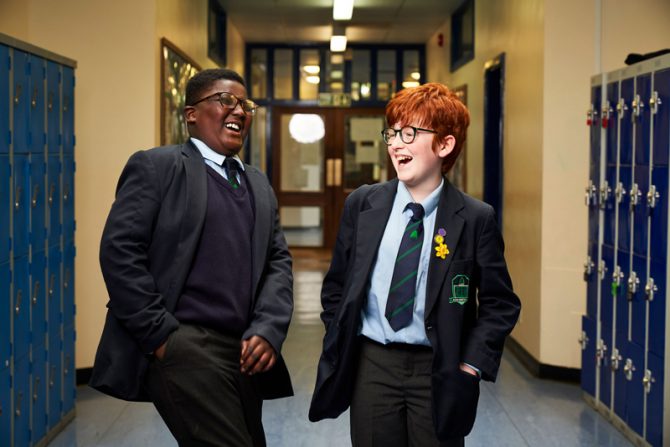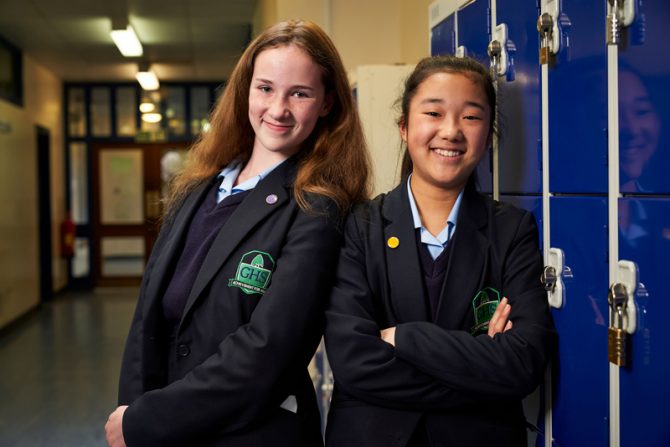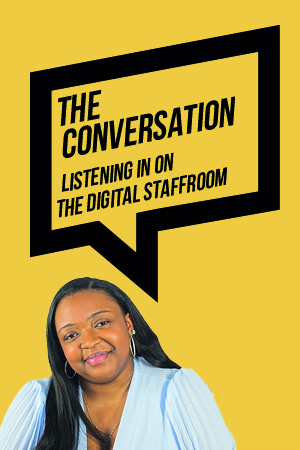Publisher
Channel 4
Published
25 Jun 2020
Natasha Devon finds the school environment presents a provocative microcosm for exploring racism in society more broadly
We cannot solve a problem if we deny its existence. That’s why the most troubling aspect of public discourse on race is the insistence by white voices, despite evidence to the contrary, that the UK is not a racist country.
Hailing as I do from a mixed-race family, no one needs to persuade me that I, with my relatively light skin, enjoy more privilege and less discrimination than my darker-skinned siblings. Yet I can also see how the racism I’ve witnessed has been both subtle and insidious, and would be hard to spot if you weren’t either attuned to or on the receiving end of it.

It is at this starting point that we find ourselves in Channel 4’s timely The School that Tried to End Racism, in which year 7 pupils insist that they “do not see race”. We hear (predominantly white) 11-year-olds proclaim confidently that skin colour doesn’t matter and that no one should be, or indeed is, treated differently in Britain because of it.
The experiment takes place at Glenthorne High School in south London, a high-performing state school with a 50 per cent BAME pupil population. The opening scenes invite the viewer to question the worthy words as they are interspersed with footage of a white girl touching her black friend’s hair without consent and a teacher choosing two white pupils to answer his question first, despite BAME children having their hands up. An initial unconscious bias test confirms that of the 24 pupils in the class, 18 favoured white people, while only two favoured black people. Four were neutral.
The experiment initially involves separating the children into two “racial affinity groups” – one “white” and one “black and other minorities”. But how can segregating children according to ethnicity serve to enhance multiculturalism? The show’s experts – Dr Nicola Rollock and Professor Rhiannon Turner – argue that it is only by enforcing initial segregation that an honest conversation about race can be instigated.
From the mouths of these relative babes come sentiments we’ve all heard
Rollock explains that children under the age of 11 tend to mix with diverse skin colours and cultures, yet, as they progress through adolescence, there is a tendency to split into race or faith-based friendship groups. My experience working in schools certainly attests this. They hope to intercept this process and prevent unconscious bias “crystallising into adulthood”.
Episode one (of two) focuses on three pupils: most viewers will probably see themselves in at least one of them. Henry is white and very indignant about the whole process. He has been told from a young age that racism is wrong, doesn’t consider himself in any way prejudiced and is uncomfortable discussing the topic. Mahkai is black and has experienced enough racism to know it is a reality of life. He’s reconciled to prejudice in a way that’s heart-breaking to watch. Farrah is of mixed heritage and looks white in certain lights, brown in others. Initially, she isn’t sure which group to place herself in. Her palpable sense of relief and joy when she’s defiantly told by her BAME friends that she “belongs with them” is one of many emotional moments.

The school is a kind of symbolic microcosm. From the mouths of these relative babes come sentiments we’ve all heard in our homes, workplaces, pubs or on tv. The white pupils don’t regard themselves as having an identity (and even if they did, they perceive celebrating Englishness as inherently racist). The BAME children have knowledge of and pride in theirs by the bucketload, but most have learned to stop challenging the micro-aggressions they experience daily.
Through the eyes of these children, many of the complex socio-political questions that adults wrangle with start to become clear. The School that Tried to End Racism holds up a mirror and asks us if we can tolerate what we see. It should be compulsory viewing.
Marie Gentles will review the second and final instalment next week













An utterly appalling show.
As the writer notes, initially the white kids:
“proclaim confidently that skin colour doesn’t matter and that no one should be, or indeed is, treated differently in Britain because of it.”
Until this idea of “difference” is put into their heads by segregation.
Who thought it a great idea to divide the class into two….
…..based on non-whiteness ?
All white in one group – and anyone a bit darker in the other.
How is creating a non-white “gang” anything other than divisive and potentially antagonistic ?
And when it came to the first in-group discussions, they confirmed the sickness at the heart of Identity Politics.
The “dark” kids were allowed to, no – encouraged to be “proud” of their heritage. They discussed enthusiastically.
By contrast, the white kids were silent. They had nothing to say about theit culture. No “pride”.
Eventually, Ginger head said “Why are we split up from our friends?”
But imagine if they had been “proud” to be white/ British/English whatever….
One can almost hear intake of breath, followed by “white supremacist”…..
But no. The white kids had “got the memo”.
“Don’t talk about race. Don’t be “proud”.
In conclusion, the good heart of the kids was summed up by “Ginger”.
Youngsters genuinely treat people as individuals – not as “race-reps”….
….until corrupted by divisive, sectarian Identitarian Social Justice Warriors.
Disgusting TV.
As a secondary school teacher of Religion and Philosophy, and of PSHE on occasion, The School that Tried to End Racism inspired me to write a series of lesson plans based around the programs, aimed at use in PSHE with year sevens in my school where the percentage of BAME pupils is extremely high. If permission is granted to go ahead, I hope to be able to try this out this coming academic year. My own take on the program was that much greater understanding of issues, and depth of relationship, was effected among the pupils who opted into the two-week course. I felt extremely moved watching understanding unfolding.
Unconscious bias tests have been disowned by the people who created them as they show nothing — they have failed to prove their reliability and their reproducibility. They are about as valid a test as looking at the movements of the planets to predict behaviour — i.e. it’s a pseudo-science, just like the rest of this ‘anit-racist’ nonsense. This stuff is racist by definition — it thinks people should be treated differently based on skin colour. It encourages racial pride and shame for different groups — based on skin colour! This is sickening and the sooner we all wake up to this rubbish and kick it out of our schools, the better.
Sure racism exists, and it’s abhorrent. But Britain is one of the least racist countries in the world. So it is incorrect to say we are a racist country as such; the majority of the other countries of the world score far worse.